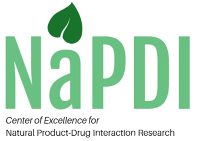Comprehensive Literature Search
Using 22 unique terms, a PubMed search was conducted. Preclinical and clinical pharmacokinetic studies evaluating cannabinoids, their respective metabolites, their potential CYP/UGT metabolism and P-gp/MDR, BCRP, OCT2, OAT1/3, OATP1B1/1B3 transport, as well as their potential drug interactions, were reviewed. Any studies involving only synthetic analogues, pharmacodynamics, non-human animal experiments, non-conventional pharmacokinetic studies, and review articles were excluded. Full text articles only in non-English languages and those not available were also not included. The resulting 172 abstracts were independently reviewed in duplicate by two clinically-trained professionals. Case reviews were reviewed using the Drug Interaction Probability Scale (DIPS) as described by Horn et al. and were excluded if they did not exceed the threshold of “Doubtful” interaction. Of the 171 abstracts screened, 70 texts were filtered and re-reviewed in duplicate, resulting in 26 full-text studies ultimately accepted for entry into the repository. Eight of these 26 studies were clinical and of the remaining were preclinical studies — 11 involved enzymes and seven involved transporters. Six case reports were returned in the search, but all did not exceed the “doubtful” threshold following DIPS review.
Selection of Cannabinoids as high-priority natural products
Literature reported in vitro studies demonstrate cannabinoid inhibition towards CYP1A1, CYP3A4, CYP2C9, CYP2C19, CYP2D6 and UGT metabolism and P-gp and BCRP transport. A limited number of literature clinical studies expand on these findings, emphasizing the need for further research. Widespread illicit, recreational, and medical marijuana use in the United States is well-documented. Extensive literature data and critical knowledge gaps identified by the Pharmacology Core identified cannabinoid-mediated CYP inhibition as a high priority target for potential cannabinoid-precipitated NPDIs.
Sourcing Appropriate Cannabinoid and Cannabis Products
THC and CBD are commercially available as individual purified compounds from multiple vendors. The National Institute on Drug Abuse (NIDA) contracts with the University of Mississippi to grow, harvest, store, and make available bulk marijuana or other purified elements of marijuana for use in research studies.
Mechanistic in vitro Evaluation
Non-specific binding of THC and CBD to plastic and human liver microsomal proteins was evaluated using the tube adsorption method. Biorelevant solubility studies were conducted using fed and fasted simulated intestinal fluids (FeSSIF-v2 and FaSSIF-v2). Binding corrected in vitro inhibition potency of THC and CBD towards major human CYPS was determined using an optimized cocktail assay consisting of probe substrates for CYP3A (testosterone), CYP2D6 (dextromethorphan), CYP2C9 (diclofenac), and CYP2C19 (omeprazole). Binding corrected inhibition potencies in conjunction with biorelevant solubility profiles and systemic exposure estimates were used to predict intestinal and hepatic interaction potential with four human CYPs following clinically relevant THC and CBD doses.
Bansal S, Maharao N, Paine MF, Unadkat JD. Predicting the potential for cannabinoids to precipitate pharmacokinetic drug interactions via reversible inhibition or inactivation of major cytochromes P450. Drug Metab Disp, 48(10):1008-1017, 2020. https://doi.org/10.1124/dmd.120.000073
PMID: 32587099 PMCID: PMC7543485
Clinical Study Design
Pending evaluation by the NaPDI Pharmacology Core.
Data Reporting
Literature data describing cannabinoid metabolism and disposition and comprehensive data generated by the NaPDI Center interaction project to describe cannabinoid-mediated drug interactions have been uploaded into the database using standard operating procedures developed by the Informatics Core.
